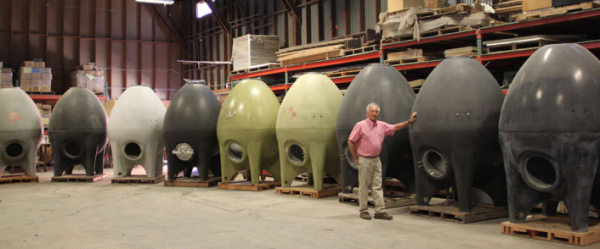An 18th century French prime minister once described the proper way to engage with wine this way: First one looks at the wine, then one smells the wine, then one talks about the wine. Whether he may have advanced so far as to actually taste the wine is not known, but there’s nothing to beat this oft-quoted bon mot as a way of introducing the importance of being able to talk a good game – winewise, I mean.
Like the fashion world it mimics, the world of wine likes to move a little faster than most of us can comfortably keep up with, thus the need for the occasional touch-up and top-up of our wine vocabulary. What follows are six terms, some new and some old, you really ought to be familiar with even if you don’t plan on crossing swords with a Master Sommelier anytime soon.
Off-farm inputs. The wine world is struggling manfully to come to grips with what we mean when we talk about natural or authentic wine. Those dedicated to the concept seem agreed on one point: that such wine should be made with minimum recourse to anything but fruit – whenever conditions allow. Things like fertilizers, fungicides, sulfur (an anti-microbial agent; see below), tartaric acid (depresses pH) , cane or beet sugar (raises potential alcohol) have few obvious qualities in common – except that they are all things that a farmer has to buy, i.e. they’re not the outcome of agriculture, but of some industrial process. To capture them all in a meaningful way, the phrase off-farm inputs has been coined – and it’s quite a useful one I think, except that it is easily confused with off-putting farmers, which is another thing entirely.

MiOx. Short for micro-oxygenation, a technique created by French vintner Patrick Decournu in the early 1990’s to help tame the tannins in wines made from the sturdy (and scratchy) tannat grape. A relatively simple machine, it introduces small, measured amounts of oxygen into maturing red wine, accomplishing what would have taken years to effect in passive wooden barrels, softening and smoothing tannins and producing a more comfortably-textured sip. Science doesn’t entirely understand the chemistry yet, so don’t feel that you have to. Just dropping it into conversation here and there will give your words a more velvety – and therefore more persuasive – sound.
Yield: The amount of finished wine produced from an acre or hectare of vineyard and limited by appellation law. Generally, the more important the wine the lower the permitted yield. For example, the permitted yield for Cotes du Rhone (a cheap everyday drink) is 44 hectoliters of wine per hectare of vineyard — equivalent of about 465 gallons per acre — while the permitted yield for Chateauneuf du Pape (a pricey special-occasion sip) is 35 hectoliters/hectare. A winemaker is free to make wine at yields lower than the one prescribed, he just can’t exceed it. The theory seems to be that a vineyard has only so much goodness to give, and the more grapes you ask it to ripen, the more its measure of goodness gets spread out – diluted. Think of it this way, the fewer students a teacher has to oversee, the more attention each one gets. Elite schools have low student to teacher ratios; in the ones I attended it was the other way ’round.
Sulfur/sulfites/sulfides. One day we’ll take this up in detail, but for now, let’s just sort this troublesome trio out so that you can use these quite similar terms to dazzle your interlocutors. Sulfur is an element (“S” on the periodic table; atomic number 16) that we have known for a long time has powerful anti-microbial powers. In the ancient world it was used to treat wounds; sulfur matches were burned to fumigate storage containers, including amphorae and barrels that held wine. Modern, commercial-style wines require treatments with sulfur (in the from of potassium metabisulfide) to retain their fresh aromas, flavors, and colors. Additions at bottling secure wines against strange things happening while they wait for you to pull the cork. If you make wine in the naturalist style, strange things don’t trouble you as much so you use much less sulfur – none at all if you can get away with it.

The term sulfites is used on wine labels to describe the combination of naturally-occurring and added sulfur that exists in a bottle of wine. In order for wine to be labeled organic in the U.S., it may not have any added sulfur, but may still contain sulfites because, well, they happen. Sulfides is the term that’s coming to be preferred for a whole range of chemical compounds that occur during fermentation and (here’s the thing to remember) give rise to a spectrum of wine aromas that are referred to as “sulfur-like odors.” These include scents like gunflint, burned rubber, struck match, boiled cabbage – none of which is anything to sniff at.
 The cement egg. If you still think that making wine in clay pots buried in the ground is the coolest, trendiest thing it can only be because no one has caught you up on the way, way cooler technique involving egg-shaped concrete fermenters developed by the French company Nomblot. While concrete has been in use since early in the 20th century as a material for both fermenting and maturing wine, it wasn’t until 2001 that French vat maker Marc Nomblot made the first known cement container in an ovoid shape at the request of the notable Rhone vintner Michel Chapoutier. Above, Steve Rosenblatt of Sonoma Cast Stone , a U.S. cement egg hatchery, poses with some of his 476 gallon vats.
The cement egg. If you still think that making wine in clay pots buried in the ground is the coolest, trendiest thing it can only be because no one has caught you up on the way, way cooler technique involving egg-shaped concrete fermenters developed by the French company Nomblot. While concrete has been in use since early in the 20th century as a material for both fermenting and maturing wine, it wasn’t until 2001 that French vat maker Marc Nomblot made the first known cement container in an ovoid shape at the request of the notable Rhone vintner Michel Chapoutier. Above, Steve Rosenblatt of Sonoma Cast Stone , a U.S. cement egg hatchery, poses with some of his 476 gallon vats.
Tests appear to show that these non-reactive, womb-ish vats which share a morphology – and perhaps a neolithic-era origin – with the celebrated Willendorf Venus have some advantages over those with corners. The liquid inside seems to be in a constant state of subtle circulation, for one. Also, there is virtually no evaporation. But this doesn’t mean that the wine is in an airtight environment. On the contrary, winemakers report that wine matured in the egg develops the same pleasing textures barrel aging is intended to accomplish, but without contributing anything in the way of wood flavors or tannins.
This last point is especially important for winemakers who see their wine as a means of expressing the unique character of their property, and for consumers who like their cabernet over easy.
Reach me at stephenmeuse@icloud.com
Follow Stephen Meuse
